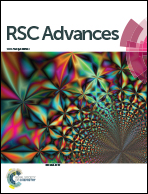The influence of the constituent elements on the corrosion mechanisms of silver alloys in sulphide environments: the case of sterling silver
Abstract
The corrosion of copper and silver in sulphide environments was assessed by several analytical techniques to investigate the influence of each one on the corrosion of sterling silver. The surface colour changes with the immersion time due to the formation of corrosion products composed of particles with distinct sizes and shapes and the consequent layer thickening. Ag2S is the main corrosion product of silver. At early stages of corrosion, Cu develops Cu2O and Cu2S, and later Cu2O again. After the corrosion of sterling silver, pure Cu and Ag are compared, and the predominant influence of Cu at the first stages may be suggested whilst Ag mainly contributes to longer corrosion stages. The layer-by-layer corrosion structure observed for the sulphidation of sterling silver was not observed for its constituent elements.



 Please wait while we load your content...
Please wait while we load your content...